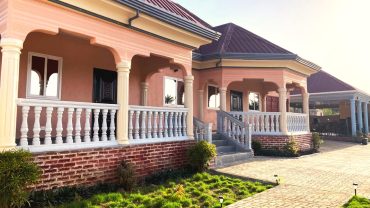The monuments and Relics Commission of Sierra Leone, founded in June 1947 was set aside by government to Provide for the Preservation of Ancient, Historical, and Natural Monuments, Relics and other Objects of Archaeological, Ethnographical, Historical or other Scientific Interest.
These ancient monuments can be building, ruin, remaining portion of building or ruin, stone circle, pillar, statue, tumulus, grave, cave, rock shelter, kitchen maiden, earthwork, iron-smelting site, underground cistern, shell mound or other site or thing of similar kind, of archaeological, ethnographical, historical or other scientific interest, but does not include any ancient working such as shaft, cutting tunnel or stipe which was made for mining purposes and which has been proclaimed as such by the Government.
Since its establishment, the commission has faced so many challenges and as such, it has been very ineffective in carrying it duties and obligations. This, according to many is believed to be the lack of government’s support in developing the Monument and Relics Commission. The commission has just been able to boast of a few achievements since its formation in 1947. One of its proudest achievements is the declaration of 20 sites and objects as national monument in which the last declared site was since 1965. Out of the 20 declared, only 18 of them are in existence; the other two have completely disappeared either by natural cause or negligence. Another achievement in the previous years is the placing our six (6) sites (3 cultural and 3 Natural sites) on the UNESCO’s tentative list of potential world heritage sites. These sites include: Bunce Island, Old Fourah Bay College building, The King’s Shared Gate, Tiwai Island, Gola Forest and the Western Area Peninsula Forest National park.
But all hope is not lost yet, that’s according to the current chairman of the Commission-Isatu Smith. Under her leadership (along with the other appointees), she promises to revive the Commission by getting both the government and the private sector involve in the rebranding of Sierra Leone’s Heritage. Just days after her appointment, she and the Minister of Tourism and Culture visited Bunce Island (one of the declared monuments) and the site is now a top in the Minister’s priority list for sites that need immediate maintenance. Madam Isatu Smith is also working on the creation of a Resource Center which will help train local tour operators on issues relating to heritage sites and the country’s history. Other urgent activities the commission will be carrying out soon is to engage Paramount Chiefs and town elders to help recognize and preserve certain centers, traditions, and other activities which are of significance to both their local communities as well as Sierra Leone’s history.
“My immediate task for now will be on setting up a Secretariat and hire relevant staff to with the Commission and later this year, we will be reviewing the 1947 Ordinance and bring it up to date since most of what is in it is outdated. I have just proposed to the other board members and the Ministry of Tourism and Culture to do a cultural mapping which will be focusing at sites, culture, traditions which are of significant to our history. Each Paramount Chief or Chiefdom will be given the opportunity to submit list of suggested sites, culture, tradition, etc which the Commission will review especially those with official status and will be put out for the public to contest and if nobody contests against it, the Commission along with the Ministry of Tourism and Culture will then work together in declaring these suggested places or traditions as either national monuments or otherwise, depending on what they are” says Isatu Smith.
“We have a full line up of activities on our working list. We are looking at establishing a five year work plan for the Commission, a five year work plan for the National Museum (including the Railway Museum), a plan for Cultural and Tourism development, etc. We want by the end of my term as chairman, the Monument and Relics Commission will be a sector that has seen considerable reform and should have a strong governance structure and with qualified technical and support staff. I also want to see that all of our cultural heritage be well managed and use for their commercial purposes and lastly having a nation that respects its cultural heritage”…added Isatu Smith.
ABOUT ISATU SMITH
Ms. Smith is the Chairman of the Monuments and Relics Commission, and
this is due to her dedication, passion, energetic drive and long years
of experience in cultural heritage management. She was a Research
Teaching Assistant at Fourah Bay College upon graduation with a 2. 1.
Honors Degree in Geography. She then served as Education Officer for
the Sierra Leone Gullah Kinship Association-an organization funded by
the European Union and dedicated to the preservation of Bunce Island
as well as exploring the unique cultural and historical links between the
Gullah people of coastal South Carolina and Georgia who are
descendants of slaves taken from Sierra Leone and West Africa. Ms.
Smith worked as Tourism Officer at the Hotel mammy Yoko and later at
the National Tourist Board of Sierra Leone where she was the Tourism
Information officer. During the war years Ms. Smith spent almost 11
years in the United States and returned home in 2011. She took up
appointment as the Deputy Coordinator of the Bunce Island Project
where she increased her knowledge and experience of cultural heritage
management. Ms. Smith wants to have a life-long
career in cultural heritage management and she is set to pursue a
Master’s Degree at the University College London in Cultural Heritage
Management in 2014.




Comment (0)